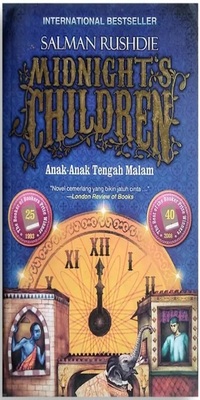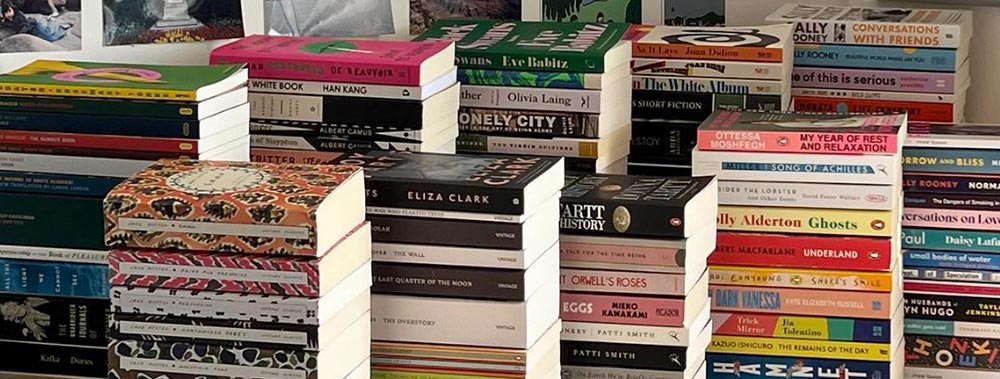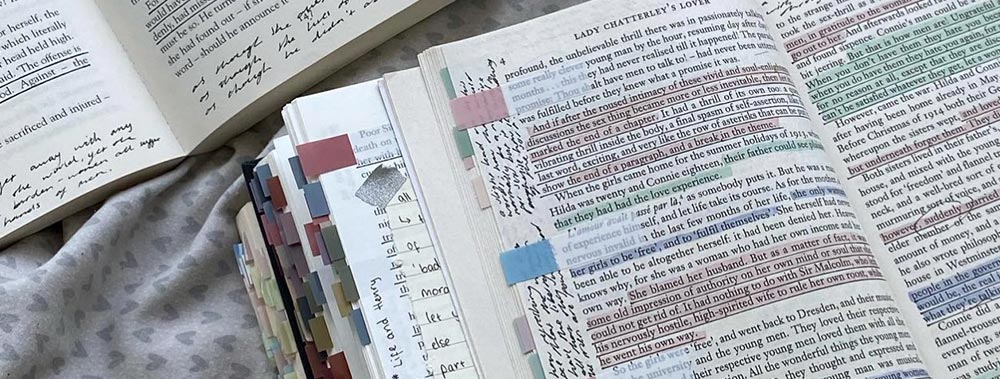Midnight's Children: Summary, Plot, Characters, Literary Analysis & More
“Midnight’s Children” is a groundbreaking novel by Salman Rushdie, first published in 1981. This novel is widely regarded as one of Rushdie’s most significant literary achievements and is known for its profound impact on post-colonial literature.
“Midnight’s Children” weaves a captivating narrative around Saleem Sinai, one of the 1,001 children born at the exact moment of India’s independence in 1947, each imbued with extraordinary telepathic powers.
Set against the backdrop of India’s tumultuous history, including the Indo-Pakistani War and the era of Indira Gandhi’s rule, the story follows Saleem’s life story and his extraordinary connection with his fellow midnight children.
Salman Rushdie’s “Midnight’s Children” is a masterpiece of magical realism and historical fiction, offering a unique perspective on the Indian subcontinent’s journey to independence and the complex interplay of personal destinies within the broader historical context.

"Midnight's Children" is a magical realist epic that spans several decades, exploring the tumultuous history of India from the time of its independence in 1947.
Table of Contents
Summary The Plot Characters Key Themes Genres Language used Literary devices Summing upThe Plot
The novel “Midnight’s Children” by Salman Rushdie is a sprawling narrative that intricately weaves together the lives of its characters with the backdrop of India’s tumultuous history. The story centers around Saleem Sinai, born at the stroke of midnight on August 15, 1947, the exact moment of India’s independence.
Saleem discovers his telepathic powers, which connect him to the other midnight-born children, including Shiva, his nemesis. Raised by Mary Pereira, a nurse who switched him with another baby, he grows up in the Sinai family, unaware of his true heritage.
As Saleem begins to understand his role as a symbol of India’s independence, he loses his telepathic abilities, mirroring the decline of idealism in post-independence India.
The story also delves into the political landscape, with references to figures like Indira Gandhi, and characters like Picture Singh and Mian Abdullah, who play crucial roles in Saleem’s life.
Characters
The novel features a rich tapestry of characters who play pivotal roles in the narrative, each contributing to the novel’s intricate exploration of post-independence India. These characters, with their diverse backgrounds and personalities, collectively shape the destiny of the nation and reflect the complexity of its historical journey.
Saleem Sinai
The protagonist and narrator, Saleem is one of the midnight-born children endowed with telepathic powers, symbolizing the new India. His life becomes intertwined with the country’s history, making him a unique and complex figure.
Mary Pereira
The nurse who switched Saleem at birth, Mary becomes a crucial caregiver in Saleem’s early life, setting in motion a series of events that profoundly impact Saleem’s identity.
Indira Gandhi
The real-life Prime Minister of India during a tumultuous period, Indira Gandhi’s actions and policies cast a significant shadow over the lives of Saleem and other characters, reflecting the political landscape of the time.
Shiva
Another midnight-born child, Shiva is Saleem’s rival and represents a contrasting fate, embodying a more aggressive and destructive path in the new India.
Amina Sinai
Saleem’s mother, Amina’s life and struggles mirror the larger struggles faced by women in post-independence India.
Ahmed Sinai
Saleem’s father, Ahmed’s complex relationship with his son, and his own personal journey reflect the broader themes of identity and heritage explored in the novel.
Picture Singh
A pivotal character, Picture Singh is a close associate of Saleem and plays a significant role in the unfolding events of the story.
Padma
Saleem’s wife, Padma’s character represents the personal relationships and challenges faced by the protagonist as he navigates his extraordinary life.
Key Themes
“Midnight’s Children” explores a multitude of themes, with one central theme being the loss of identity and the disintegration of the idealism of post-independence India. This is exemplified through Saleem’s loss of his telepathic powers and the changing landscape of the nation, including the involvement of the Pakistani army. Three important themes in the novel are:
Identity and Loss
Saleem’s loss of his telepathic powers symbolizes the loss of individual and national identity in a rapidly changing India.
Conflict and Partition
The involvement of the Pakistani army underscores the theme of conflict, division, and the repercussions of India’s partition.
History and Memory
Saleem’s narrative reflects on the collective memory and history of India, demonstrating how personal and national histories are intertwined and shaped by individual experiences.
Genres in Midnight's Children
“Midnight’s Children” is a multifaceted literary work that combines elements of magical realism, historical fiction, and post-colonial literature.
This amalgamation of genres enriches the narrative, enabling Salman Rushdie to seamlessly blend the extraordinary with the historical, providing a unique lens through which to explore the complexities of post-independence India.
Magical Realism
The infusion of magical elements, such as Saleem’s telepathic powers, adds an enchanting layer to the story, blurring the line between reality and fantasy while highlighting the extraordinary in the everyday.
Historical Fiction
The novel’s backdrop of post-independence India, with references to real historical events and figures like the Pakistani army, Indira Gandhi, and the Indo-Pakistani War, anchors the story in a specific historical context, enhancing its depth and authenticity.
Post-colonial Literature
“Midnight’s Children” is a seminal work in the post-colonial literary canon, addressing themes of identity, nationhood, and the legacy of colonialism in India, contributing to the broader discourse on post-colonial literature.
Language used in Midnight's Children
Salman Rushdie employs a rich and evocative writing style that skillfully captures the atmosphere and emotions of the narrative. Through Saleem Sinai’s first-person narration, the language becomes a powerful tool to convey his personal experiences and the changing landscape of post-independence India.
As Saleem loses his telepathic powers and his connection to the other midnight-born children, Rushdie’s prose mirrors this loss, transitioning from a fantastical and whimsical tone to a more introspective and melancholic one.
The language becomes a reflection of Saleem’s own journey, moving from youthful idealism to a profound sense of disillusionment.
Rushdie’s use of vivid imagery, wordplay, and cultural references adds depth to the story, making “Midnight’s Children” not only a compelling narrative but also a linguistic masterpiece that captures the complexities of identity, history, and loss.
Literary devices in Midnight's Children
Literary devices are employed to create a rich and layered narrative. The novel weaves a tapestry of magical realism, employing fantastical elements like Saleem’s telepathic powers and the mysterious connection among the children of midnight to illustrate the extraordinary within the ordinary.
Rushdie uses symbolism and allegory to depict the political turmoil of the era, notably India’s invasion of Pakistan, paralleling the internal and external conflicts faced by the characters.
The recurring motif of Saleem’s story within a story adds depth, inviting readers to question the reliability of narrators and explore themes of memory and identity.
Uncle Hanif’s character and the midnight children’s conference serve as literary devices to represent the larger complexities of post-independence India, making “Midnight’s Children” a masterful blend of narrative techniques and social commentary.
Similes
In “Midnight’s Children,” Salman Rushdie employs similes to vividly describe and compare various elements of the story, enriching the reader’s understanding and engagement. For example, when describing the tumultuous Indo-Pakistan war, Rushdie writes, “The conflict raged on like a relentless storm, tearing through the Indian subcontinent.”
This simile effectively conveys the relentless and destructive nature of the war, making the historical backdrop palpable to the reader.
Another instance is when Saleem grows and evolves, the narrative describes his transformation as “like a sapling reaching for the sun.” This simile beautifully captures Saleem’s growth, both in physical and metaphorical terms, emphasizing his journey towards self-discovery and understanding of his place in post-colonial India.
These similes serve to make the novel’s historical and personal dimensions more relatable and immersive, enhancing the reader’s connection to the story.
Metaphors
Throughout “Midnight’s Children,” Salman Rushdie employs metaphors to convey deeper meanings and layers of symbolism. For instance, when discussing the repercussions of Indian independence, he metaphorically states that “Indian independence was a double-edged sword, cutting both liberating and painful paths through the heart of the nation.”
This metaphor paints a vivid picture of the complex consequences of independence, highlighting both the promise of freedom and the pain of division.
The character of Jamila Singer, often seen as a symbol of post-colonial India’s aspirations and struggles, is metaphorically depicted as a “melodic beacon of hope in a cacophonous world.” This metaphor underscores her significance as a voice for change and optimism in a chaotic society.
Metaphors like these infuse “Midnight’s Children” with depth, allowing readers to explore the intricate web of ideas, emotions, and historical events that define post-colonial India and Saleem’s personal journey.
Analogies
The author employs thought-provoking analogies in “Midnight’s Children” to help readers grasp complex ideas and connect them to the broader themes of the novel. For example, when Uncle Hanif commits suicide, it is likened to “a fallen star disappearing into the darkness,” underscoring the sudden and tragic nature of his death. This analogy helps convey the emotional impact of the event on Saleem and the family.
Rushdie also draws an analogy between India’s gaining of independence and the aging process, suggesting that “India gained its independence like an old man taking his last breath.” This analogy poignantly captures the sense of long-awaited freedom and renewal after years of colonial rule.
These analogies provide readers with fresh perspectives on significant events and emotions in the story, making it easier to relate to and engage with the complex narrative.
Imagery
Salman Rushdie masterfully employs vivid imagery in “Midnight’s Children” to create sensory experiences for the reader, immersing them in the rich tapestry of the narrative. For instance, the description of Saleem’s grandfather as “a stooped figure, his face etched with the lines of a lifetime” evokes a powerful visual image of age and wisdom.
The character of Parvati the witch is depicted with striking imagery, described as having “eyes that glittered like stars in the night sky.” This imagery not only adds to her enigmatic character but also creates a sense of otherworldly magic in the story.
Rushdie’s use of imagery extends to the sense of smell as well, with descriptions like “the pungent scent of the brass monkey” immersing readers in the sensory world of the novel.
Overall, Rushdie’s skillful use of imagery enhances the reader’s engagement with the narrative, making “Midnight’s Children” a truly immersive literary experience.
Symbolism
In “Midnight’s Children” by Salman Rushdie, symbolism is intricately woven into the narrative, connecting various elements to larger themes.
One striking example is the character of Ahmed Sinai, who embodies the suffering and turmoil faced by the Indian subcontinent during the post-independence period. His personal struggles with identity and loss symbolize the broader challenges of a newly independent India.
Joseph D’Costa, known for his immense nose, symbolizes the stark differences and divisions present in the post-colonial society. His exaggerated physical feature serves as a metaphor for the divisions and prejudices that persist in Indian society despite gaining independence.
The Reverend Mother represents the colonial legacy and religious tensions in post-colonial India, serving as a symbol of the complex interplay between religion and politics.
These symbolic elements enrich the narrative, allowing readers to delve deeper into the novel’s exploration of identity, history, and the Indian experience.
Personification
Salman Rushdie skillfully employs personification in “Midnight’s Children” to breathe life into characters and settings, adding depth to the narrative.
One instance is when Saleem finds solace in the “whispering winds that tell tales of the past.” Here, the winds are personified as storytellers, emphasizing the role of nature in conveying the history and memories of the Indian subcontinent.
Another example is when Saleem agrees with the “reluctant walls” that hold the secrets of the Sinai family. This personification imbues the walls with a sense of consciousness, highlighting their role as silent witnesses to the family’s history and suffering.
These instances of personification contribute to the novel’s lyrical quality and evoke a sense of intimacy with the characters and their surroundings, enhancing the reader’s connection to the story.
Hyperbole
In “Midnight’s Children” by Salman Rushdie, hyperbole is employed to emphasize the dramatic and larger-than-life aspects of the narrative. One notable example is the portrayal of characters with magical powers, where their abilities are often exaggerated to fantastical extremes.
This hyperbolic approach serves to accentuate the magical realism in the story, blurring the lines between reality and fantasy.
The character of Wee Willie Winkie, known for his extraordinary abilities, is described with hyperbolic language, making his magical powers seem astonishing and almost unbelievable. This technique contributes to the sense of wonder and enchantment in the novel.
By using hyperbole, Rushdie creates a world where the extraordinary becomes ordinary, enhancing the reader’s immersion in the fantastical elements of the story and reinforcing the novel’s themes of magic and identity.
Irony
Salman Rushdie employs various forms of irony in “Midnight’s Children,” adding depth and complexity to the narrative. One form of irony is situational irony, where the novel’s characters often find themselves in unexpected and ironic situations.
For example, Ahmed’s business ventures in post-independence India, intended to prosper, often result in unexpected setbacks, creating a sense of irony in his pursuit of success.
Verbal irony is also present when characters speak in a way that contrasts with their true intentions or the reality of the situation. This can be seen when William Methwold, an Englishman in India during the era of British rule, claims to be in love with the Indian culture, despite the oppressive colonial context. This use of verbal irony highlights the hypocrisy and insincerity of certain characters.
The irony in “Midnight’s Children” serves to underscore the novel’s exploration of identity, power, and the complex interplay of history and personal narratives. It encourages readers to critically examine the contradictions and complexities of the characters and their world.
Juxtaposition
Salman Rushdie artfully employs juxtaposition in “Midnight’s Children” to highlight stark contrasts and create thought-provoking scenarios. One striking example is the juxtaposition of India’s invasion of Pakistan against the backdrop of infant Saleem’s birth.
This juxtaposition of birth and conflict underscores the inherent paradox of a nation’s simultaneous struggle for independence and internal strife.
Another instance is the contrast between Saleem and the other midnight-born children. While Saleem possesses telepathic powers, the other children exhibit diverse and unusual abilities. This juxtaposition serves to emphasize the uniqueness of Saleem’s character and his central role in the narrative.
Rushdie’s use of juxtaposition deepens the reader’s engagement with the story, encouraging reflection on the complex dynamics of post-independence India.
Paradox
“Midnight’s Children” by Salman Rushdie is replete with paradoxical statements and situations that provoke thought and contemplation. One paradox is the punishment Saleem receives for a crime he didn’t commit. This injustice highlights the absurdity of the world and the arbitrary nature of power.
The character of Nadir Khan, who is both a victim and a perpetrator, embodies paradox as he navigates the complexities of his identity. His actions reflect the ambiguity and contradictions of post-colonial India.
Another paradox is the existence of other children born at midnight, each with unique powers, which underscores the idea that even in a group of extraordinary individuals, there can be profound differences.
These paradoxes add depth to the narrative, inviting readers to explore the intricate layers of meaning and symbolism in the novel.
Allusion
Salman Rushdie incorporates literary and historical allusions in “Midnight’s Children” to enrich the context of the story.
One significant allusion is to the historical event of India invading Pakistan, a reference to the real-life conflicts between the two nations. This allusion serves to anchor the novel in the historical reality of the Indian subcontinent.
Naseem Ghani, a character in the novel, alludes to the broader struggles faced by women in post-colonial India, drawing on historical and cultural references to depict the challenges they encountered.
These allusions add depth and complexity to the narrative, allowing readers to connect the events in the novel to the larger historical and cultural context of India during the period of its independence and beyond.
Allegory
“Midnight’s Children” by Salman Rushdie contains allegorical elements that represent broader themes and concepts. The novel’s central narrative, revolving around Saleem Sinai and other midnight-born children, serves as an allegory for the post-independence Indian experience.
Saleem’s personal journey mirrors the struggles, identity crises, and challenges faced by the newly formed nation of India.
Aadam Aziz’s story, depicted in the novel’s early chapters, can be seen as an allegory for the larger themes of colonialism and cultural identity. His journey from a young man studying in Europe to a doctor in India represents the clash of cultures and the influence of Western thought on the Indian subcontinent.
These allegorical elements enrich the narrative, allowing readers to engage with the novel on multiple levels, from the personal to the societal and historical.
Ekphrasis
The novel features instances of ekphrasis where works of art are vividly described within the narrative. One notable example is the description of the famous snake charmer, a recurring motif in the story.
The vivid depiction of the snake charmer’s performance adds depth to the narrative, creating a sensory experience for the reader.
Another instance is the portrayal of Saleem’s sister as a work of art, with her beauty and grace described in intricate detail. This ekphrasis emphasizes her significance in the story and adds a layer of visual richness to the character.
By employing ekphrasis, Rushdie enhances the reader’s engagement with the narrative, using vivid descriptions of art and beauty to convey deeper meanings and emotions.
Onomatopoeia
“Midnight’s Children” by Salman Rushdie utilizes onomatopoeic words to add auditory dimensions to the narrative. For instance, when describing Naseem Ghani’s fall, the use of onomatopoeia in the text creates a sense of the event’s suddenness and impact. The word choices evoke the sound of the fall, immersing the reader in the moment.
In the depiction of Saleem’s first hour of life, onomatopoeic language is employed to convey the chaos and noise of the midnight hour, emphasizing the extraordinary circumstances of his birth.
The famous snake charmer’s performance is also enhanced through onomatopoeia, with the hissing and rattling sounds of the snakes adding to the sensory experience.
These onomatopoeic elements serve to make the narrative more immersive, allowing readers to engage not only visually but also aurally with the story’s events and settings.
Repetition
Salman Rushdie employs repetition strategically in “Midnight’s Children” to emphasize key themes and create a lasting emotional impact. The recurring motif of India invading Pakistan echoes throughout the narrative, reinforcing the idea of internal and external conflict within the newly formed nation.
This repetition serves to underscore the turmoil and division faced by the characters and the Indian subcontinent as a whole during this period.
Additionally, the repetition of the phrase “punishes Saleem” throughout the novel creates a sense of foreboding and contributes to the novel’s themes of fate and destiny. It reinforces the idea that Saleem’s life is intertwined with the larger forces shaping India’s post-independence era.
The Use of Dialogue
In “Midnight’s Children,” dialogue plays a vital role in conveying character traits, exploring themes, and building narrative tension. Through dialogue, characters reveal their unique voices and perspectives, shedding light on their complexities.
Saleem’s interactions with other characters, such as when he confronts those who question his identity, highlight his struggle for self-identity in a diverse and ever-changing India.
The dialogue surrounding India’s invasion of Pakistan and its aftermath provides a platform for characters to express their political beliefs and personal experiences, adding depth to the novel’s exploration of nationalism and conflict.
Furthermore, the use of dialogue creates narrative tension, especially in moments when Saleem’s destiny is debated or when his connection to the midnight-born children is questioned, emphasizing the novel’s themes of fate and identity.
Word Play
In “Midnight’s Children” by Salman Rushdie, wordplay techniques like puns and double entendre are artfully employed to add depth and layers to the narrative.
The term “midnight children” itself is a play on words, signifying both the literal time of their birth and their unique powers. This wordplay underscores their extraordinary nature.
Saleem’s discovery of his telepathic abilities is described using wordplay, emphasizing the profound shift in his understanding of himself and his place in the world. The term “Saleem begins to hear” takes on a dual meaning, representing both the literal sense of hearing and the awakening of his telepathic powers.
Furthermore, the phrase “Saleem loses his powers” carries a double entendre, indicating not only his loss of telepathy but also the broader themes of identity and disillusionment.
Parallelism
“Midnight’s Children” employs parallelism to enhance the novel’s structure and convey its message. The parallelism between Saleem and the other midnight-born children serves to highlight their shared destiny and unique abilities.
While Saleem is the protagonist, his experiences are paralleled by the others, reinforcing the interconnectedness of their lives.
Parallelism also exists in the journeys of characters like Mian Abdullah and Saleem, both of whom undergo transformations and self-discovery. These parallel narratives create a sense of symmetry and balance in the novel’s structure, emphasizing the idea that individual experiences are part of a larger pattern.
Overall, parallelism in “Midnight’s Children” contributes to the novel’s thematic exploration of fate, identity, and the collective history of post-independence India.
Midnight's Children: FAQs
This FAQ provides answers to common questions, helping readers navigate the intricacies of the story and its themes.
What is the message of Midnight’s children?
The message of “Midnight’s Children” revolves around the complex interplay of personal and national identity, the impact of history on individuals, and the intricate tapestry of post-independence India.
Why was Midnight’s children controversial?
“Midnight’s Children” was controversial due to its portrayal of sensitive themes, including religion and politics, and its critical stance on the Indian government, which led to bans and threats against the author.
How did Midnight’s children end?
“Midnight’s Children” concludes with Saleem Sinai accepting his destiny and recognizing his connection to the other midnight-born children. The novel ends on a reflective note, exploring themes of memory and identity.
Summing up: Midnight's Children: Summary, Plot & More
This is a literary masterpiece that weaves together the personal and the political, the magical and the mundane, to create a rich tapestry of post-independence India.
Its impact lies in its ability to transcend mere storytelling, delving deep into the complexities of identity, nationhood, and history. Rushdie’s masterful use of language, symbolism, and allegory captivates readers, inviting them to explore the intricacies of a newly independent India.
The novel’s appeal endures, as it continues to be a thought-provoking exploration of the human experience and a testament to the power of storytelling to illuminate the world’s complexities.
Other Notable Works by Salman Rushdie
If you are interested in “Midnight’s Children”, you may be interested in other works by Salman Rushdie including:
- “The Satanic Verses” (1988): A controversial novel that explores themes of religion, identity, and immigration, it garnered significant attention for its challenging narrative.
- “The Moor’s Last Sigh” (1995): A multi-generational family saga set in India, delving into the country’s history, culture, and politics.
- “The Ground Beneath Her Feet” (1999): A unique blend of myth, music, and love story that takes readers on a journey through various time periods and locations.
- “Shalimar the Clown” (2005): A novel that weaves together personal and political stories, exploring the impact of violence on individuals and communities.
- “The Golden House” (2017): A contemporary novel that delves into the lives of a wealthy immigrant family in New York City, tackling themes of identity and ambition.
These works by Salman Rushdie offer a diverse range of themes and storytelling styles, providing readers with a captivating exploration of various aspects of the human experience.







